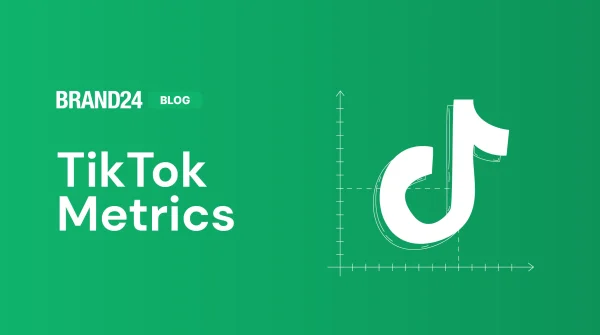All You Need to Know About Facebook’s News Feeds Algorithm
Table of contents
Every day a single Facebook users can be exposed to an average of 1,500+ possible stories in the Facebook News Feeds. This is how many posts Facebook can show us, on average.
Now, imagine that News Feeds are a table that people are sitting at and talking to each other. What happens if there are more and more people joining the table and there is no enough place for everyone to sit and chat? Problems? Not really. News Feeds Algorithm to be more precise.
In the effort to enable every single user to access and get involved only in the most relevant conversations at the metaphorical News Feed table, in 2006 Facebook started an algorithm-based feed. This, in the light of an increasing content volume being published, was meant to enable each person on Facebook to get to see only the content that is the most relevant and interesting for them rather than showing all possible content that is being shared.
The algorithm, according to which the News Feeds are being displayed, changes constantly forcing marketers to keep up with the pace and giving them a real headache – not just of declaiming organic reach. Even though there are brands that have already left the “Facebook algorithm’s race” as a statement against the fact that their content posted without paying reaches fewer and fewer people, we think that you only lose when you stop trying. To help you getbetter understanding of the world’s most influential algorithm, we put together a capsule guideline of how Facebook’s News Feeds Algorithm actually works.
Warning! Please note that as the algorithm is constantly changing the information provided here have an expiry date subjected to further Facebook announcements.
Why Does Facebook Use News Feeds Algorithm?
Facebook’s News Feed is the page where we see a personalized and constant stream of “stories” from friends, family, as well as businesses.
The goal of News Feed is to show the right content to the right people at the right time. The problem appeared, though, when the increasing volume of content started to be published across the network. You have probably felt this change yourself. If you have had a Facebook account for a few years now, think how many updates you wrote when you started and how many things you share now? People are connecting and sharing more than ever and the News Feeds Algorithm’s job is to determine which stories appear first.
“Our goal is to build the perfect personalized newspaper for every person in the world,” explained his vision for News Feed, Facebook CEO Mark Zuckerberg in a public Q&A in 2014. “We’re trying to personalize it and show you the stuff that’s going to be most interesting to you”, he continued.
To fulfill this, Zuckerberg’s Team of engineers and data scientists meet every Tuesday in the “John Quincy Adding Machine” room at the Facebook headquarters, Menlo Park, California, to assess the billions of likes, comments and clicks Facebook users make each day and to find out how to make us like, comment and click even more. They study user behaviour to pick up signals that manifest what kind of content each user is most interested in. So that out of these potential 1.500+ stories that an average person might see in the News Feed, the page eventually displays approximately 300.

How Does Facebook News Feeds Algorithm Know My Interests?
News Feeds Algorithm knows, or rather predicts, what is the most relevant for you by letting you decide first who and what to connect and interact with, and then by listening to your feedback. To choose which stories to show you, News Feed ranks each possible story (from more to less important) with a “relevancy score” by taking into account thousands of variables relative to each person.
The “relevancy score” is, therefore, specific both to a particular user and particular post. For example, when you share something on my Facebook wall, it gets a different “relevancy score” on your Friend A’s News Feeds and a different on Your Friend B’s News Feeds. The higher the assigned score, the higher the chances that Friend A and B will see your post.
“Our ranking isn’t perfect, but in our tests, when we stop ranking and instead show posts in chronological order, the number of stories people read and the likes and comments they make decrease”, said Lars Backstrom, Director of Engineering at Facebook.
What Factors Does F
There is a bit of mystery around this subject as no one outside Facebook really knows exactly how the News Feeds Algorithm works. However, there are certain hints and indicators based on the official Facebook announcements as well as well as general observations. The News Feed Algorithm listen to the signals from you and interpret them in a very specific way – every positive feedback is read as a
Here are some variables the Facebook’s Algorithm looks at to:
- How often you interact with a friend, a group or a Page that posted
- The number of likes, reactions, shares and comments a post receives from the world at large and from your friends in particular
- How much you have interacted with this type of post in the past
- Whether or not you and other people across Facebook are hiding or reporting a given post
- Time
- Who you have hand-picked to “see first”
Once every possible post in your feed receives the “relevancy score” based on the factors, a little sample of which you can see above, the sorting algorithm puts them in the order they eventually end up appearing in your feed. So, every time you log into Facebook you see A) only the tip of the iceberg of what has been really shared B) this tip is meant to represent only the most relevant content for you, C) this content is showed to you not by coincidence but by very precise design.
What next?
As the competition for a spot in the Facebook’s News Feeds become more and more fierce and Facebook’s algorithm allows only the highest quality content, businesses that are trying to reach a larger audience through their Facebook pages should focus on publishing good content that meets their followers’ needs and taste.
Perhaps a good way to go about it is to place greater importance on knowing your followers’ community better rather than growing its number at the cost of loosing connection and engagement with them. As Gary Vaynerchuk said in his recent article on quality vs. quantity of the followers count “Instead of talking about how many people see your content, we need to be focusing on how much value that piece of content actually brings your audience.”
Use Brand24 to listen and analyze your followers’ social conversations to see what they like and don’t like. Try a free 14-day account, track mentions of your brand and stay up-to-date with who your followers really are.



![A Complete Guide to AI Social Media Analysis [2024]](https://brand24.com/blog/wp-content/uploads/2020/03/750x300_x2-1.png)
![What is AI Social Media Monitoring? Definition [Guide]](https://brand24.com/blog/wp-content/uploads/2022/09/What-is-Social-Media-Monitoring.png)
